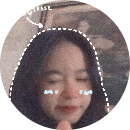Read the following passage and mark the letter A, B, C or D on your answer sheet to indicate the correct answer to each of the following questions from 39 to 40.
Animation traditionally is done by hand-drawing or painting successive frames of an object, each slightly different than the preceding frame. In computer animation, although the computer may be the one to draw the different frames, in most cases the artist will draw the beginning and ending frames and the computer will produce the drawings between the first and the last drawing. This is generally referred to as computer-assisted animation, because the computer is more of a helper than an originator.
In full computer animation, complex mathematical formulas are used to produce the final sequence of pictures. These formulas operate on extensive databases of numbers that define the objects in the pictures as they exist in mathematical space. The database consists of endpoints, and color and intensity information. Highly trained professionals are needed to produce such effects because animation that obtains high degrees of realism involves computer techniques for three-dimensional transformation, shading, and curvatures.
High-tech computer animation for film involves very expensive computer systems along with special color terminals or frame buffers. The frame buffer is nothing more than a giant image memory for viewing a single frame. It temporarily holds the image for display on the screen.
A camera can be used to film directly from the computer's display screen, but for the highest quality images possible, expensive film recorders are used. The computer computes the positions and colors for the figures in the picture, and sends this information to the recorder, which captures it on film. Sometimes, however, the images are stored on a large magnetic disk before being sent to the recorder. Once this process is completed, it is repeated for the next frame. When the entire sequence has been recorded on the film, the film must be developed before the animation can be viewed. If the entire sequence does not seem right, the motions must be corrected, recomputed, redisplayed, and rerecorded. This approach can be very expensive and time consuming. Often, computer-animation companies first do motion tests with simple computer-generated line drawings before selling their computers to the task of calculating the high-resolution, realistic-looking images.
According to the passage, the frame buffers mentioned in the third paragraph are used to ________.
A. add color to the images
B. expose several frames at the same time
C. store individual images
D. create new frames
















